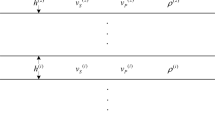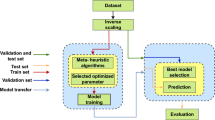Abstract
Buried unexploded ordnance (UXO) continues to be a difficult remediation problem from both a sensing and a discrimination point of view. Modern approaches to both the sensing and discrimination problems utilize high bandwidth electromagnetic induction (EMI) sensors to collect geo-referenced data which is then inverted, or fit, using a forward model in order to obtain features that can be directly interpreted using the physics associated with electromagnetic induction-based sensing. These features are then used in a variety of classification architectures. One aspect of this process that has captured recent interest is that uncertainty in the positions at which data was collected can degrade the inversion performance and thus the subsequent classification. Several mechanisms to address this issue have been explored that range from filtering and prediction of actual positions to exploiting Bayesian approaches for uncertainty mitigation. In the Bayesian approach, a statistical model of the position errors is used as a prior for integrating over the uncertainty in the inversion process. In this study, we demonstrate that errors in the statistical priors used in this process can negatively impact subsequent classification performance, thus highlighting the need for an accurate statistical model for the position errors. Next, we propose a mechanism by which to obtain such models. Specifically, we utilize a Goff–Jordan rough surface model and simulate the sensor data collection system motion over the simulated ground or ocean surfaces to calculate errors and generate statistical models. Our results suggest that this approach can be used to develop the statistical models necessary for mitigating uncertain position information.












Similar content being viewed by others
References
Bell T (2005) Geo-location requirements for UXO discrimination. SERDP and ESTCP Geolocation Workshop
Bell T, Barrow B, Miller J (2001) Subsurface discrimination using electromagnetic induction sensors. IEEE Trans Geosci Remote Sens 39:1286–1293
Billings SD, Herrmann F (2003) Automatic detection of position and depth of potential UXO using continuous wavelet transforms. SPIE 5089:1012–1022
Billings S, Youmans C (2007) Experiences with unexploded ordnance discrimination using magnetometry at a live-site in Montana. J Appl Geophys 61(3–4):194–205
Butler D, Pasion L, Billings S, Oldenburg D, Yule D (2003) Enhanced discrimination capability for UXO Geophysical Surveys. SPIE 5089:958–969
Capuzzo JP (2007) After ordnance scare, beachgoers told to dig with care. New York Times
Chilaka SV, Faircloth DL, Riggs LS, Nelson HH (2006) Enhanced discrimination among UXO-like targets using extremely low-frequency magnetic fields. IEEE Trans Geosc Remote Sens 44(1):10–21
Collins LM, Zhang Y, Li J, Wang H, Carin L, Hart S, Rose-Pehrsson S, Nelson H, McDonald J (2001) A comparison of the performance of statistical and fuzzy algorithms for unexploded ordnance detection, Special issue on Recognition Technology. IEEE Trans Fuzzy Systems 9(1):17–30
DSB Report to the U.S. Congress (1998) Unexploded ordnance clearance: a coordinated approach to requirements and technology development. Office of the Undersecretary of Defense, Washington, DC
Goff JA, Jordan TH (1988) Stochastic modeling of seafloor morphology: inversion of sea beam data for second-order statistics. J Geophys Res 93(B11):13589–13608
Goff JA, Jordan TH (1989) Stochastic modeling of seafloor morphology: a parameterized Gaussian model. Geophys Res Lett 16(1):45–48
Lavely E, Grimm R, Weichman P (1998) Detection and discrimination of landmines and UXO, IGARSS, pp 514–516
Nelson HH, McDonald JR (2001) Multisensor towed array detection system for UXO detection. IEEE Trans Geosc Remote Sens 39(6):1139–1146
Pasion LR, Oldenburg DW (2001) A discrimination algorithm for UXO using time-domain electromagnetics. J Eng Environ Geophys 6:91–102
Pasion LR, Billings SD, Oldenburg DW, Walker SE (2007) Application of a library based method to time domain electromagnetic data for the identification of unexploded ordnance. J Appl Geophys 61(3–4):279–291
Premus V, Alexandrou D (1994) Bayesian estimation of Goff–Jordan seafloor microroughness statistics via simulated annealing. J Acoust Soc Am 96(5), Pt. 1, pp 2887–2896
Rose-Pehrsson SL, Shaffer RE, McDonald JR, Nelson HH, Grimm RE, Sprott TA (1999) UXO target detection using magnetometry and EM survey data. SPIE 3534:496–507
Shamatava I, O’Neill K, Shubitidze F, Sun K, Paulsen KD (2004) Investigation of EMI sensor orientation and position effects on buried metallic target discrimination. In: Proceedings of mathematical methods in electromagnetic theory (MMET) conference, pp 452–454
Shubitidze F, O’Neill K, Shamatava I, Sun K, Paulsen K (2005) Analyzing multi-axis data versus scalar data for UXO discrimination. SPIE 5794.:336–345
Steinhurst D, Khadr N, Barrow B, Nelson H (2005) Moving platform orientation for an unexploded ordnance discrimination system. GPS World 16(5):28–34
Sun K, O’Neill K, Shubitidze F, Shamatava I, Paulsen KD (2005) A modified dipole model for target discrimination in EMI sensing. In: IEEE Ant and Prop Soc, AP-S international symposium (Digest), pp 173–176
Tantum S, Collins L (2001) A comparison of algorithms for subsurface object detection and identification using time domain electromagnetic induction data, special issue New advances in subsurface sensing: systems, modeling, and signal processing. IEEE Trans Geosci Remote Sens 39(6):1299–1306
Tantum SL, Collins LM, Khadr N, Barrow and Barrow BJ (2003) Correcting GPS measurement errors induced by system motion over uneven terrain. SPIE 5089:1105–1115
Tantum SL, Yu Y, Collins LM (2007) Bayesian mitigation of sensor position errors to improve unexploded ordnance detection. IEEE Trans Geosc Remote Sens Lett (in press)
Tarokh AB, Miller EL (2007) Subsurface sensing under sensor positional uncertainty. IEEE Trans Geosci Remote Sens 45(3):675–688
Tarokh AB, Miller E, Won IJ, Huang H (2004) Statistical classification of buried objects from spatially sampled time or frequency domain electromagnetic induction data. Radio Sci
Walker SE, Pasion LR, Oldenburg DW, Billings SD (2006) Investigating the effect of data quality on time domain electromagnetic discrimination. J Appl Geophys 61(3–4):254–278
Zhang Y, Collins LM, Yu H, Baum C, Carin L (2003a) Sensing of unexploded ordnance with magnetometer and induction data: theory and signal processing. IEEE Trans Geosc Remote Sens 41(5):1005–1015
Zhang Y, Collins L, Carin L (2003b) Unexploded ordnance detection using Bayesian physics-based data fusion. Integr Comput Aided Eng 10:231–237
Acknowledgments
This research was supported a grant (MM1442) from the Strategic Environmental Research and Development Program (SERDP). The authors would like to thank Dr. Chandra Throckmorton and Dr. Jeremiah Remus for their constructive comments on this manuscript.
Author information
Authors and Affiliations
Corresponding author
Rights and permissions
About this article
Cite this article
Tantum, S.L., Zhu, Q., Torrione, P.A. et al. Modeling position error probability density functions for statistical inversions using a Goff–Jordan rough surface model. Stoch Environ Res Risk Assess 23, 155–167 (2009). https://doi.org/10.1007/s00477-007-0210-6
Published:
Issue Date:
DOI: https://doi.org/10.1007/s00477-007-0210-6




